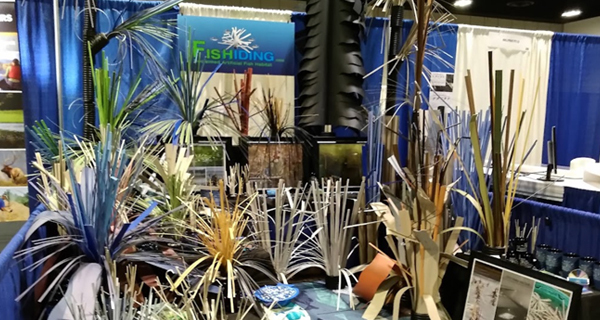A Critical Look At Artificial Fish Habitat:
Posted by Eric Engbretson on 24th Mar 2021
|
A Critical Look At Artificial Fish Habitat: Posted: 24 Mar 2021 10:56 AM PDT When considering fish habitat, I think we need to discuss the role artificial fish habitat can serve. They're being used more and more, especially in large southern reservoirs devoid of important structure fish need. Fish managers have traditionally placed bundles of Christmas or cedar trees on the lake bottom to provide cover for fish. Because the lifespan of tree bundles and brush piles is limited, replenishing them has always been an ongoing and expensive process. One advantage of artificial habitat structures that help explain their growing popularity is that they don't decay or deteriorate. But can “anything” man-made be placed in our waters and be called fish habitat? If we throw a rusty wheelbarrow into a lake today and catch a fish on it next week, can we genuinely say we’ve added fish habitat and therefore improved the lake? Are we unknowingly turning our lakes into landfills or the equivalent of the town dump under the guise of creating fish habitat? Is it really true that any structure of any kind is better than nothing? If you’ve ever wondered if there’s any discernible line between “junk” and authentic fish habitat, you wouldn’t be alone. If there’s any hope of understanding the potential benefits using artificial fish habitat might offer, I think we need to uncouple two terms: Fish habitat and fishing. Effective fish habitat needs to protect young fish too small to be of interest to anglers. The metric to evaluate how useful fish habitat is must be re-calibrated. The question shouldn’t be how many trophy bass did you catch this year on the habitat, but how many young-of-the year bass survived the brutal gauntlet of their first year of life because of the protection that habitat provided. It could be argued that the most successful fish habitat would be one that only attracted age 0 fish and was a lousy fishing spot. As anglers, we need to modify our point of view. Fish habitat should be regarded as an investment in the hope of a better day’s fishing in the future, not something with instant payoffs today. If fish habitat isn’t a vehicle for fish recruitment, what good is it? Today, there isn’t a single designer of any artificial fish habitat that doesn’t promise their product or design will protect young fish. These are merely assertions that haven’t met their burden of proof. These claims must be demonstrated before we have warrant to accept them as true. Where is the evidence that any assemblage of man-made parts and scrap material does anything to help even a single fish survive its first year, let alone to adulthood? So far, Fishiding is the only design that has continuously and consistently documented in hundreds of underwater pictures and videos over the years the efficacy of their product. If you work in the fish management sector, you should absolutely demand evidence that whatever artificial habitat you’re considering spending resources on legitimately works. As condescending as it may sound, intuition or gut feeling is not evidence. If we’re not more careful about scrutinizing and properly evaluating artificial fish habitat, we run the risk of unknowingly crossing what should be a distinct line between what authentic habitat is and what’s simply junk. |


